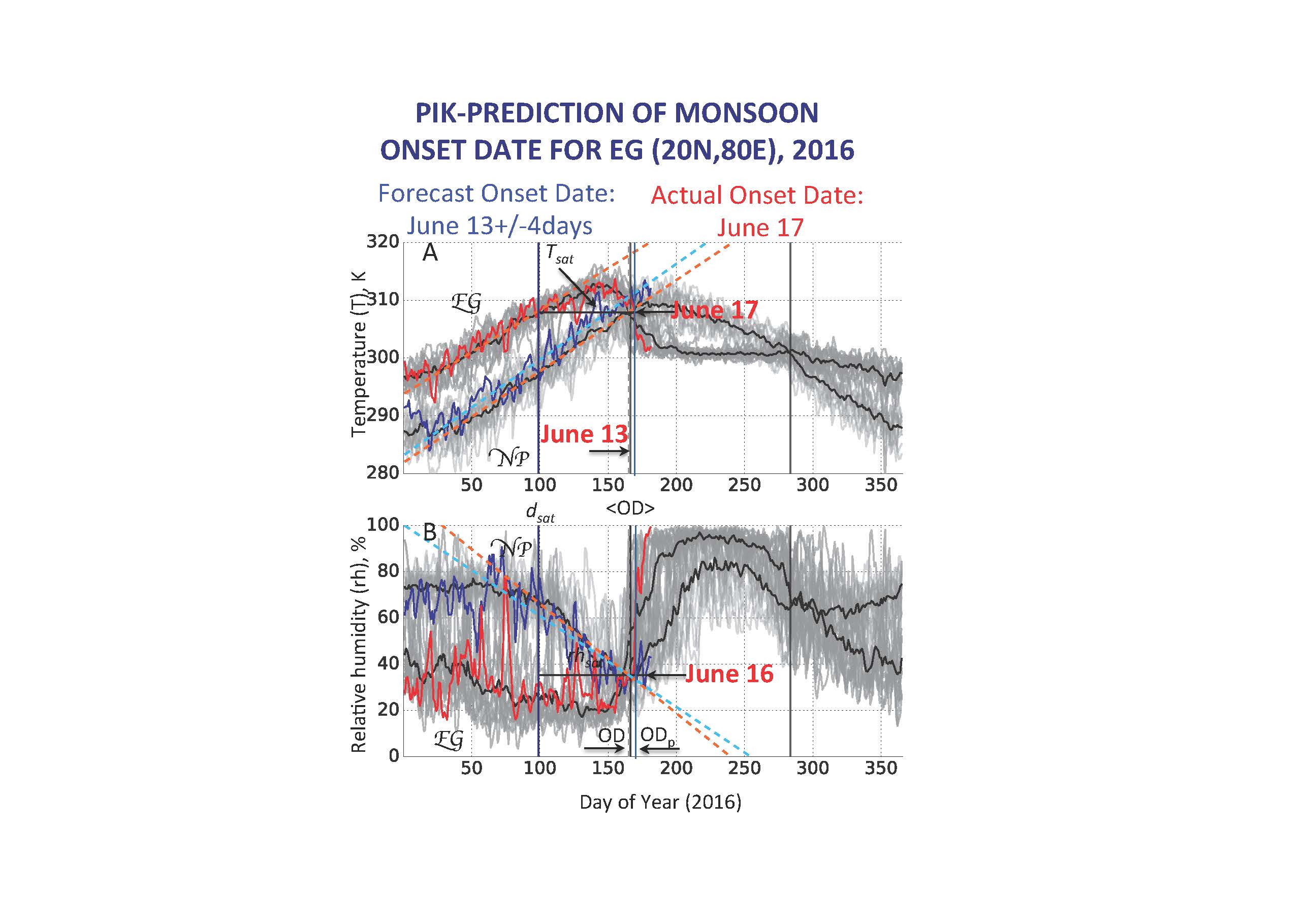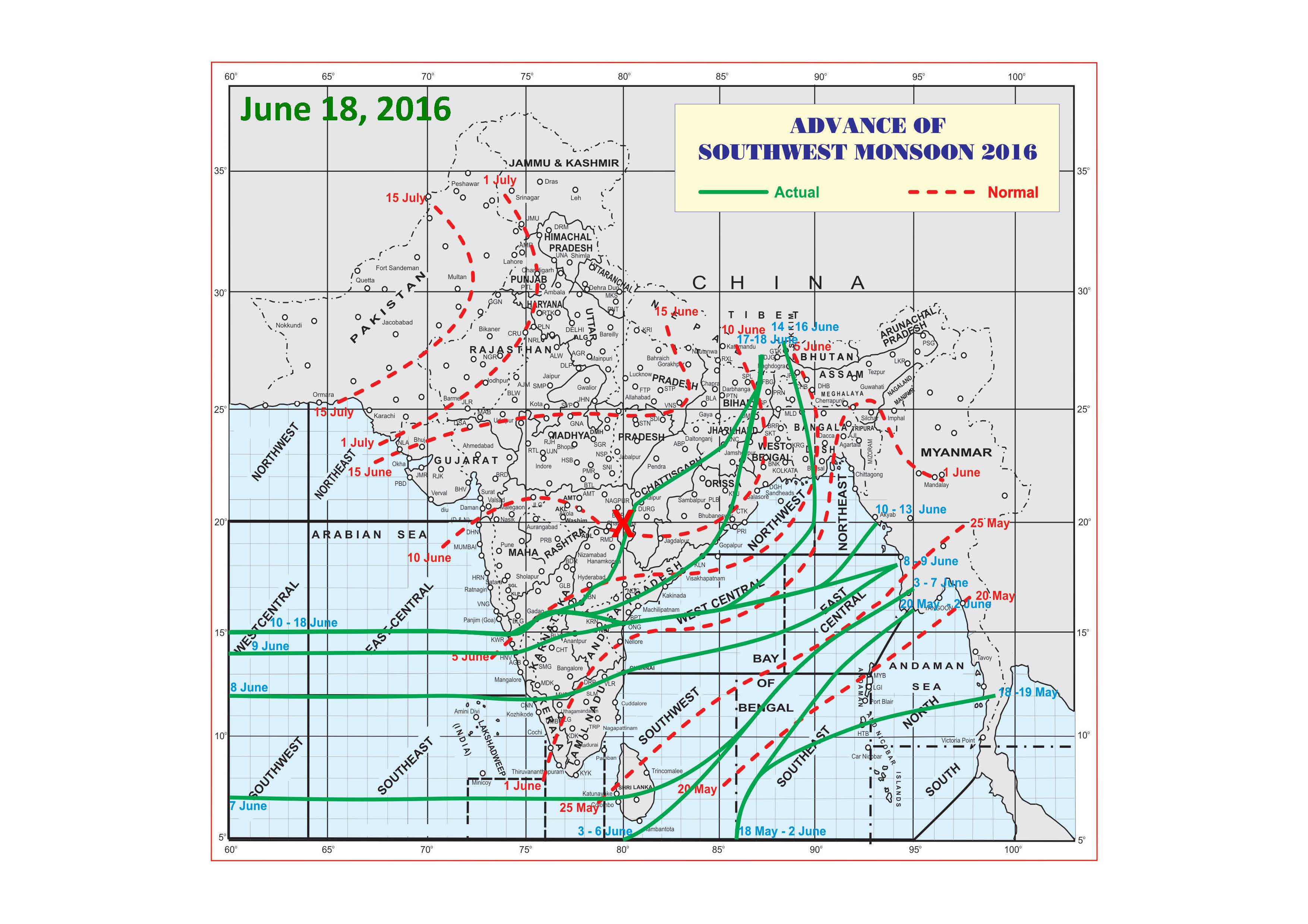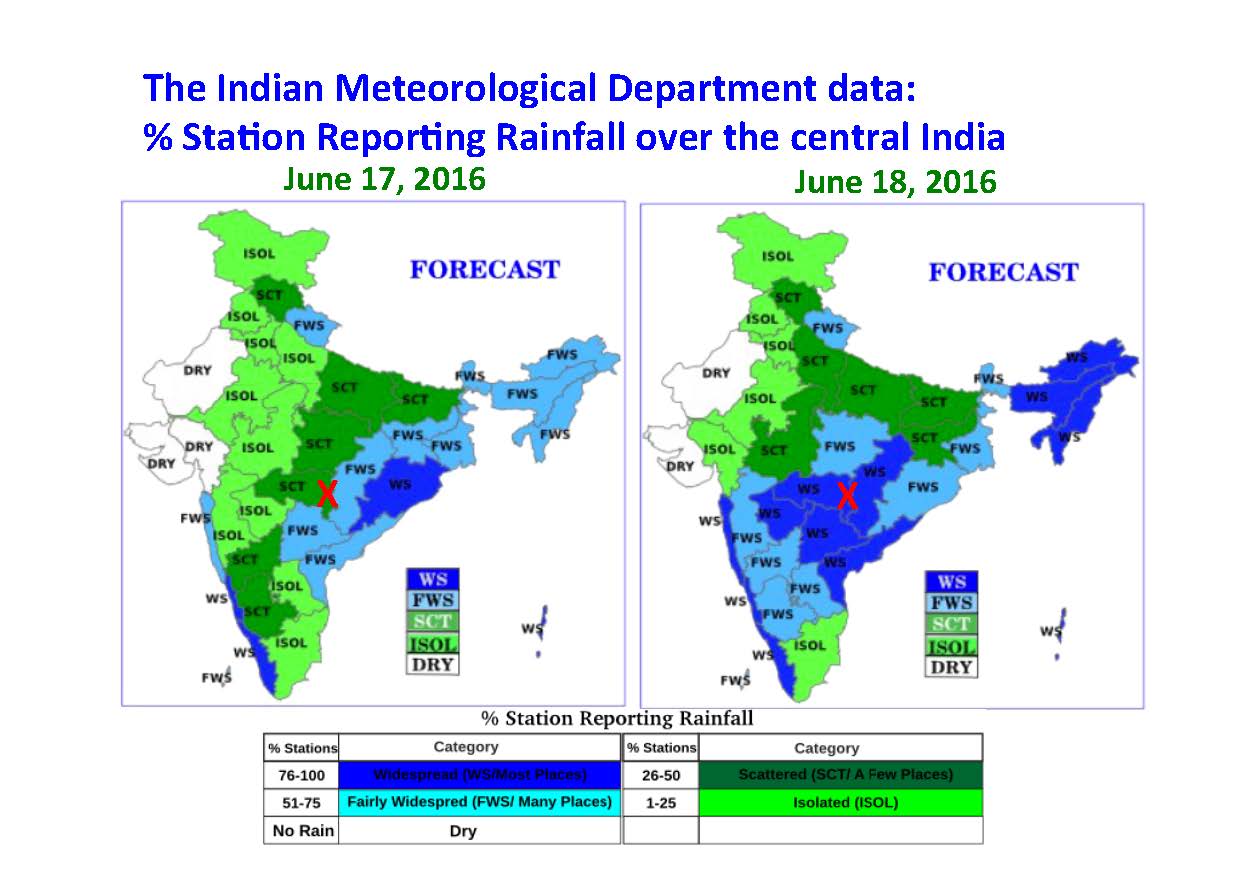
“Our approach and the one of IMD are complementary, and this will only help to improve the predictability of Monsoon onset and propagation across the Indian subcontinent ,”says Elena Surovyatkina of the Russian Academy of Sciences’ Space Research Institute, a PIK guest professor and co-author of the study. Both approaches have the same accuracy of +/- 4 days, yet they look at different data from different locations – and the new approach provides allows for earlier forecasting. “While the IMD’s long- range forecasting is 21 days before the onset of monsoon over Kerala, a state at the southern tip of the subcontinent, our long-range forecast is 40 days before the onset over Eastern Ghats, in the central part of India. This year we proved that such early forecast is possible,” says Elena Surovyatkina.
“This is a great advantage for us in planning agriculture,” said the President of the Agricultural University in Telangana, V. Praveen Rao. More lead time in Monsoon onset warning is crucial for taking appropriate decisions at various levels - from the farmer’s field (e.g. plowing day) to the central government (e.g. managing food procurement policies). In June, Elena Surovyatkina discussed the potential of the new methodology at a convention in Hyderabad. This has been on invitation from Indian experts and government members of Telangana – a state, located in central South India, with a population of more than 35 million. The regional Finance Minister Etala Rajender urged the scientists to conduct the research for the purpose “of feeding the poor”.
"Our next step is to predict the date of monsoon withdrawal - Indian farmers are waiting for our forecast because of a risk of floods this year," said the leader of the study Jürgen Kurths, head of PIK’s research domain Transdisciplinary Methods and Concepts. "Our estimations show that we can predict a withdrawal date with the accuracy of more than 80 percent," said Veronika Stolbova, lead author of the study. The team will deliver their forecast of withdrawal of monsoon from central India on July 27.
“We’re very glad to help improve Monsoon prediction – the somewhat abstract analysis of complex non-linear systems can yield very concrete practical results,” says Hans Joachim Schellnhuber, director of the Potsdam Institute for Climate Impact Research. “This becomes even more important since human-made global warming risks to disturb the Indian Monsoon, with potentially serious implications for millions of people.”
Actual onset date (OD): case study 2016

We predicted the monsoon arrival to the Eastern Ghats (20N,80E) on 13th of June with deviation of +/-4 days. The prediction was made on May 6, 2016. We now updated our previous figure (see here) with the prediction scheme by adding only actual data from May 6 up to date 29 June. In fact, temperature and relative humidity in the Eastern Ghats and North Pakistan equalized on 16-17 June. Such, June 17 is a tipping point of the transition from pre-monsoon to monsoon. Once temperature and relative humidity overcame the tipping point, the monsoon season started.
The Indian Meteorological Department data: the actual progress of monsoon onset for this year (2016) over the Indian subcontinent

The map is provided by the Indian Meteorological Department (http://www.imd.gov.in/pages/allindiawxfcbulletin.php) and updated with the progress of monsoon. The green curve indicates the Northern limit of monsoon (see lines 17th-18th June) that means the monsoon advanced up to the central India on 18th June.

It has been declared by the Indian Meteorological Department when 60% of meteorological stations reported on June 18th widespread rains during 48 hours over the Eastern Ghats (Fig. 4) - the region of our forecast (20N, 80E), indicated by a red cross on the maps. It is a final confirmation that our prediction made on May 6, that onset of monsoon over the Eastern Ghats region (20N, 80E, Gadchiroli Forest Reserve) will be around 13th June (+/- 4 days) is correct.
***UPDATE July 27, 2016: The Indian Summer Monsoon is likely to withdraw from the Eastern Ghats region around 5th October (+/- 5 days).***
Weblink to the press release on the original publication: https://www.pik-potsdam.de/news/press-releases/indian-monsoon-novel-approach-allows-early-forecasting
Weblink to the original publication in the Geophysical Research Letters: http://onlinelibrary.wiley.com/doi/10.1002/2016GL068392/full





